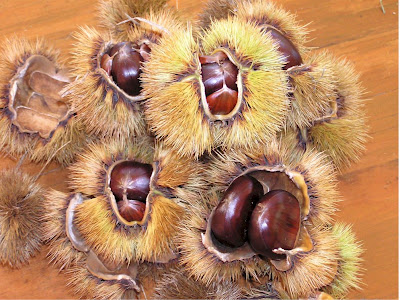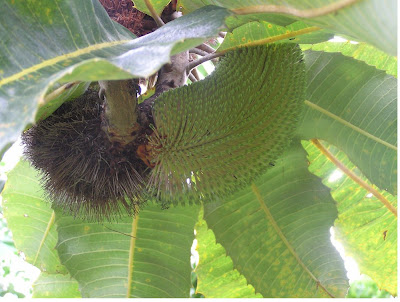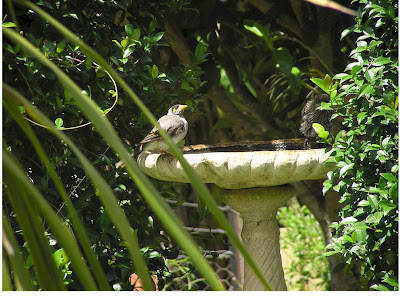
I have one Chestnut tree in the garden. It is about 3.5 meters tall and this year it has had quite a few nuts, about 1.5 kilos. The sub-tropics is not really the most ideal climate to grow chestnut trees as it is too wet and too hot. But it is a little bit of fun to have one in the garden. Chestnuts are really popular in the Northern Hemisphere like Europe and North America, where I can remember eating them hot bought from a street vendor during the colder months.
The Chestnut tree (Castanea) belongs to the same Fagaceae family as the Oak and Beech trees. There are four main species, commonly known as European, Chinese, Japanese and American Chestnuts[5]:
Sweet Chestnut (Castanea sativa) (also called "Spanish Chestnut" in the US) is the only species of European Chestnut.
Asiatic Chestnut species comprise Castanea crenata (Japanese Chestnut), Castanea mollissima (Chinese Chestnut), Castanea davidii (China), Castanea henryl (Chinese chinkapin, also called Henry's Chestnut – China) and Castanea seguinii (also called Seguin's Chestnut - China).
American species include Castanea dentata (American Chestnut - Eastern states), Castanea pumila (American- or Allegheny Chinkapin, also known as "Dwarf Chestnut" - Eastern states), Castanea alnifolia (Southern states), Castanea ashei (Southern states), Castanea floridana (Southern states) and Castanea paupispina (Southern states).[6][7]
Sweet Chestnut (Castanea sativa) (also called "Spanish Chestnut" in the US) is the only species of European Chestnut.
Asiatic Chestnut species comprise Castanea crenata (Japanese Chestnut), Castanea mollissima (Chinese Chestnut), Castanea davidii (China), Castanea henryl (Chinese chinkapin, also called Henry's Chestnut – China) and Castanea seguinii (also called Seguin's Chestnut - China).
American species include Castanea dentata (American Chestnut - Eastern states), Castanea pumila (American- or Allegheny Chinkapin, also known as "Dwarf Chestnut" - Eastern states), Castanea alnifolia (Southern states), Castanea ashei (Southern states), Castanea floridana (Southern states) and Castanea paupispina (Southern states).[6][7]
Chestnuts should not be confused with either Horse Chestnuts (genus Aesculus), or Water Chestnut (family Cyperaceae); these are unrelated to Castanea and are named for producing nuts of similar appearance but of no notable edibility in the case of the former, and tubers of similar taste from an aquatic herbaceous plant in the case of the latter.[8][9] Other trees commonly mistaken for the Chestnut tree are the Chestnut Oak (Fagaceae Quercus prinus) and the American Beech (Fagus grandifolia).[10][11]The chestnut (Castanea) belongs to the same family of trees as oak and beech trees. There are four main varieties; commonly known as European, Chinese, Japanese and American chestnuts. Most of the major varieties in Australia are hybrids of Castanea Sativa (European chestnut).
Chestnuts have been grown in Australia for over 150 years. The first recorded plantings of chestnut trees in Australia were in the 1850s and 1860s during the gold rush. Some of those trees are still growing today, and other trees in northern Victoria brought in from Europe are around 120 years old and up to 60 metes tall.
Commercial plantings have occurred in the last twenty five years or so. The south west of Western Australia is very suitable for the growth of chestnuts as they need cold winter temperatures and warm to hot summers. Chestnuts have been part of the staple diet of Southern Europe, Turkey and Asia for centuries, and are now slowly gaining popularity in Australia.
The texture of a cooked chestnut is similar to a firm baked potato (quite unlike other nuts which are crunchy), and it has a sweet nutty flavour. Until the introduction of the potato, the chestnut was a major source of complex carbohydrate in Europe.
Alexander the Great and the Romans planted chestnuts as they went across Europe on their various campaigns.
Alexander the Great and the Romans planted chestnuts as they went across Europe on their various campaigns.



































